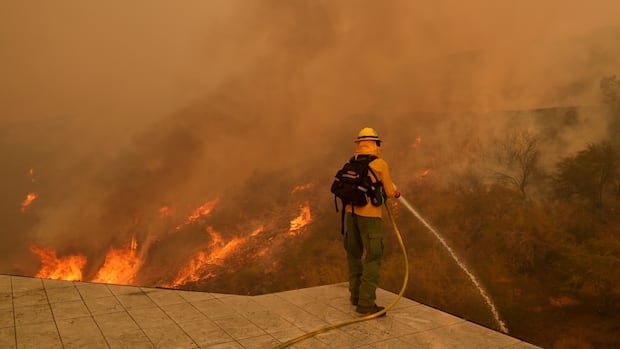A recent quick analysis reveals that the fires in Los Angeles, which resulted in 28 fatalities and the destruction of over 16,000 structures, are not isolated incidents. Researchers indicate that the likelihood of such catastrophic events has significantly increased due to climate change.
The distressing images of fires engulfing neighborhoods in one of North America’s largest cities underscore the imminent threat of extreme weather posed by the climate crisis. According to a new study by the World Weather Attribution (WWA) group, the conditions conducive to the fires were approximately 35% more probable compared to pre-industrial times.
If current global warming trends persist, the likelihood of fire conditions will rise by another 35% by the year 2100, painting a grim future for Los Angeles and southern California.
Clair Barnes, a researcher at Imperial College London and co-author of the WWA report, warns that without a swift transition away from fossil fuels, California will continue to experience escalating temperatures, increased aridity, and heightened fire risks.
The international research team behind the study utilized global climate models to project the changes in weather conditions that fueled the fires since pre-industrial times. These conditions are now projected to occur approximately once every 17 years, with increasing frequency as global temperatures continue to climb.
In essence, climate change delayed precipitation, intensified hot and dry conditions, turning vegetation into fuel around Los Angeles, and strong winds propelled the fires to unprecedented levels. These occurrences are set to become more common with rising global temperatures.
The prolonged absence of winter rains poses a significant challenge by extending the fire season, providing more opportunities for weather events to align with fire ignitions. John Abatzoglou, a climatology professor at the University of California Merced and study co-author, emphasizes that the accumulation of dry conditions and abundant vegetation significantly escalates fire risks.
The study also indicates that low rainfall from October to December is now 2.4 times more likely, heightening the threat of dry, fire-prone vegetation. These conditions align closely with the Santa Ana winds, which peak between December and January and played a crucial role in spreading the recent fires.
The study concludes that the dry, fire-prone conditions in southern California have extended by approximately 23 days annually, increasing the vulnerability of cities like Los Angeles. Abatzoglou stresses the importance of using these destructive fires as a wake-up call to better prepare for future occurrences, as the risk of such events will persist.

